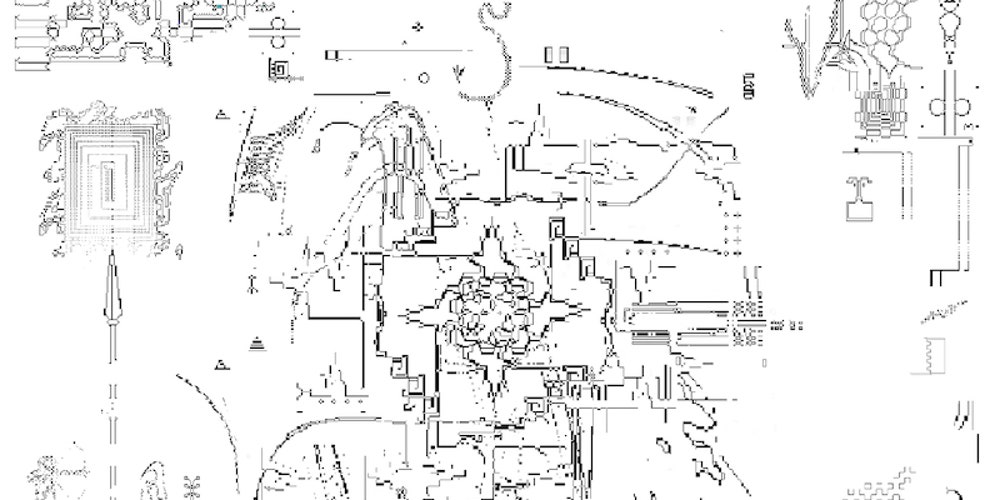Nicolás Jaar’s 2020 output so far amounts to three albums which, at first glance, have little to do with one another. First, he released a new collection under the alias Against All Logic, his Beyoncé-and-Kanye-sampling dance project, which clanged into the world like a soundtrack to the last party before February turned to March. Then the pandemic shuttered clubs and Jaar unveiled Cenizas, the long-awaited successor to his most overtly personal records, 2011’s Space Is Only Noise and 2016’s Sirens. Cenizas was a surprise: When it arrived, most of us had only been in quarantine for a few weeks, but Jaar’s prescient music sounded withdrawn and cautionary, using drawn-out ambient passages to explore an expansive sense of solitude. He may be putting out albums faster than we can get haircuts, but the 30-year-old nonetheless suggests Thoreau contemplating at Walden Pond, an artist in lockdown for reasons of conviction rather than contagion.
Months have passed and while COVID-19 continues to rage in the Americas, the Chilean American producer gives us Telas, a record in which he continues to explore solitude. Telas is the nominal successor to his 2015 film score Pomegranates, made in the vein of an ambient musician. But while Pomegranates was sprawling, Telas is a taut, exhaustively balanced work, although its four long songs add up to an hour of music. In the context of Jaar’s busy year, it signifies a continued blurring of his various roles—DJ, ambient craftsman, distinctive vocalist with an electronic toolkit—and the album’s deliberate structure and ominous mood indicate that Jaar can make direct, even political statements without sung lyrics or speech samples.
The record begins with one of the blown-out horns that Jaar has been favoring recently, accompanied by percussion performed on wooden and metal instruments built by artists Anna Ippolito and Marzio Zorio. We’ve heard Jaar use custom-built devices before, on Cenizas and the latest Against All Logic record. Here, the objects—which have both a harsh metallic ping and a dull, quick decay—suggest ancient sounds, dusted and polished to seem startling and new. The rest of opener “Telahora” and its follow-up, “Telencima,” never command the listener’s entire attention, but they’re full of symmetrical passages, calls that wait minutes before they hear responses, and phrases that sound transposed from melodic to rhythmic instruments. Jaar has mastered the art of changing his stems mid-line, turning strings into bells and back again. One of Telas’ joys is the way he shifts his sonics fluidly and frequently, without the gridded template of a danceable beat.
The record’s understatement eventually builds to a striking climax near the end of the third song: a bass clarinet, treated heavily to sound like an arpeggiated synth. It’s the most forceful moment on an album that remains effortlessly elusive, as well as an anomaly that seems endless in its reference: It suggests both the build-ups essential to dance music and the prog-rock influences that slide under the surface of Jaar’s sensibility. Jaar has discussed his love for Pink Floyd in the past, and even on a record as far afield from traditional songwriting as he’s ever ventured, their presence occasionally looms.
The last track, “Telallás,” is all denouement after Jaar’s proggy woodwind playing, but it keeps us oriented by employing more repetitive musical phrases than the album’s ponderous middle section. It’s a fitting conclusion to a record by an artist who, 12 years into his career, has little to prove about his range or ability. Telas is not a culmination for Jaar, even if it brings his ambient strains closer than ever to the more crowd-pleasing facets of his work. It suggests, instead, that his various guises were always working toward a common aim—as though all he had to do was lead us to the other end of his studio and pull the tarp off something he’s been laboring over, and suddenly every piece in the room seems like an indispensable part of a whole body of work.
Catch up every Saturday with 10 of our best-reviewed albums of the week. Sign up for the 10 to Hear newsletter here.
